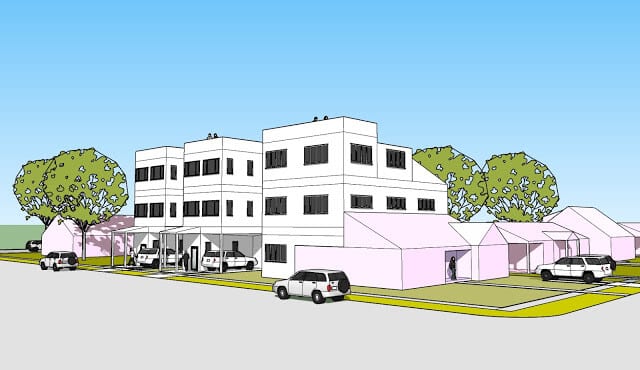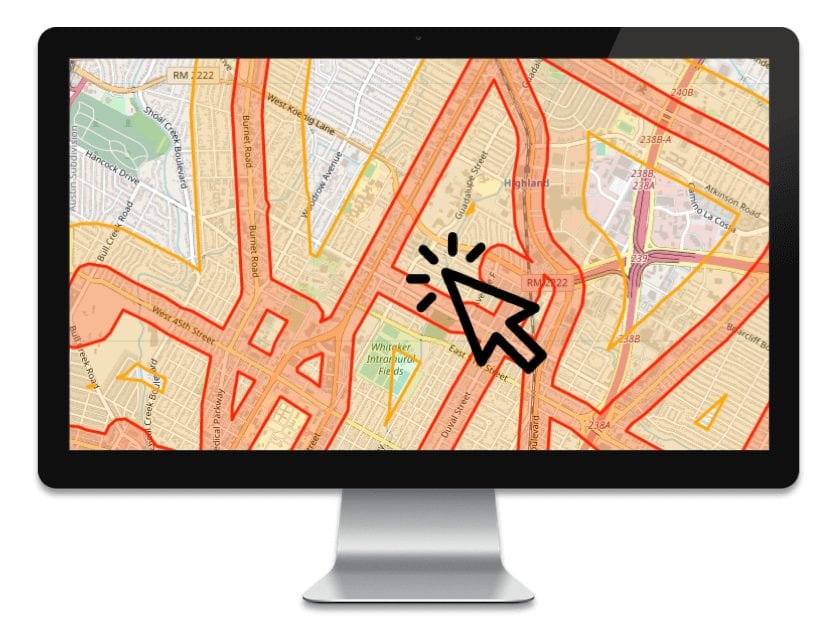
When it came time to release the latest draft of their controversial rezoning plan, the folks down at City Hall pulled the oldest trick in the book: They did it after business hours on a Friday.
That was 11 days ago. The draft weighed in at 1,382 pages, with roughly 200 amendments to the text and 40,000 proposed zoning changes to homes and other properties. To add insult to injury, none of the changes were marked in any way. Local residents who wanted to see what had changed from the plan’s previous draft would have to compare the two page-by-page and line-by-line.
The Austin Chronicle did its best to sift through the city’s edits. Its publisher reported that the plan would continue to “take a huge bite out of established neighborhoods, rezoning swaths up to 16 lots wide through the core of some areas” and found large sections of the text “baffling.” Before concluding, he warned readers that their elected officials are “poised to rezone huge chunks of the city without any planning whatsoever.”
None of that seems to bother Mayor Steve Adler. He’s insisting the Austin City Council hold a vote on the latest changes to the plan this Thursday, February 13.
We believe that vote should be postponed until the community has an opportunity to digest the current draft and provide their feedback—but here’s what you need to know as the date approaches:
Like the previous draft, the current rezoning plan virtually eliminates single-family neighborhoods throughout Austin
The plan’s latest draft allows the addition of two large dwelling units to any residential lot that is 5,000 square feet or larger and has an existing home 30 years or older. Supporters claim the new code will serve as an incentive to “preserve” an existing home—but only two walls of that home will need to remain on site, and a land developer can demolish the rest of the structure.
Local architecture-and-urban-planning team Chris and Gina Allen pummeled the city’s “preservation” scheme on their blog, and they produced this rendering showing what sort of buildings the code change would actually allow:

If the Austin City Council approves its rezoning plan, many neighborhoods may start seeing buildings like these.
High-density transition zones still blanket the city
The plan’s latest draft removes some transition zones and replaces others with slightly less dense zoning—but it also adds new transition zones in areas where they did not exist before, some only tenuously connected to a corridor (such as neighborhoods near Walsh Tarlton Lane, Ceberry Drive, Barrington Way, and Harrisglenn Drive, for example).
Austin City Council Member Ann Kitchen has been critical of the use of transition zones, and late last week she warned that their “one size fits all” approach “risks accelerating the loss of older, more affordable housing for renters and families.”

Click above to view an updated map showing how the City of Austin’s rezoning plan impacts your home and neighborhood.
Many of East Austin’s most displacement-prone neighborhoods are still in the crosshairs
While some East Austin neighborhoods were removed from transition zones, the “R2C” and “R3” zoning codes assigned to them by the latest draft of the plan continues to threaten them with redevelopment. Those codes will permit the development of more dwelling units and impervious cover than current zoning allows. The latest draft will also intensify commercial development across the East Side, rather than rein it in.
If approved, these changes will worsen Austin’s twin crises of displacement and gentrification—not alleviate them.
I remain concerned, however, we are losing our way by mapping “one size fits all” transition zones that don’t achieve new development in the right place or at the right price. … Worse still, zoning without accounting for the context risks accelerating the loss of older, more affordable housing for renters and families. —Austin City Council Member Ann Kitchen
Commercial businesses could start appearing in the interiors of neighborhoods—and some of them could be big
The plan’s latest draft allows businesses with up to five outside employees on residential lots in “RM1” transition zones and in all multifamily areas. More notably, the city’s most recent changes will allow the construction of a grocery store up to 20,000 square feet in size on any residential lot in the community—just so long as its developer obtains a “conditional use permit.” (By making it a conditional use, no rezoning is required and neighbors do not have the right to protest the development.)
That means any single-family home in the city could be demolished and replaced with a commercial store several stories high, with no parking spaces set aside for its employees or customers.
Want to take action? Here’s what we recommend:
- Make Sure You’ve Filed an Official Rezoning Protest
If you own property in Austin, go to FileYourProtest.com and file an official rezoning protest. The process is easy, safe, and takes just 30 seconds. Once you’ve filed a protest, our legal team believes the City of Austin will be unable to legally rezone your property without support from three-fourths of the city council (9 of 11 votes). - Attend and Speak at One of This Week’s City Council Meetings
The Austin City Council is meeting today, tomorrow, and Thursday to discuss the latest draft of the rezoning plan. Please consider attending—and demand that the city council postpone its Thursday vote until the community has a chance to be heard! Residents who wish to speak may use the electronic kiosks in City Hall to sign up, and they must do so before the meeting they are attending begins. Click on the above links to learn more. - Contact Mayor Steve Adler and Your City Council Member
No truly democratic city government would give local residents just six business days to review and comment on 40,000 proposed zoning changes. Let’s make sure our mayor and city council hear it! Call and email them using the contact information displayed below, and demand that they postpone their Thursday vote. Check this map if you aren’t sure which council member represents you.
Together we can build an Austin for everyone!
Mayor Steve Adler:
steve.adler@austintexas.gov | 512-978-2100
Natasha Harper-Madison (District 1):
natasha.madison@austintexas.gov | 512-978-2101
Delia Garza (District 2):
delia.garza@austintexas.gov | 512-978-2102
Sabino Renteria (District 3):
sabino.renteria@austintexas.gov | 512-978-2103
Greg Casar (District 4):
gregorio.casar@austintexas.gov | 512-978-2104
Ann Kitchen (District 5):
ann.kitchen@austintexas.gov | 512-978-2105
Jimmy Flannigan (District 6):
jimmy.flannigan@austintexas.gov | 512-978-2106
Leslie Pool (District 7):
leslie.pool@austintexas.gov | 512-978-2107
Paige Ellis (District 8):
paige.ellis@austintexas.gov | 512-978-2108
Kathie Tovo (District 9):
kathie.tovo@austintexas.gov | 512-978-2109
Alison Alter (District 10):
alison.alter@austintexas.gov | 512-978-2110